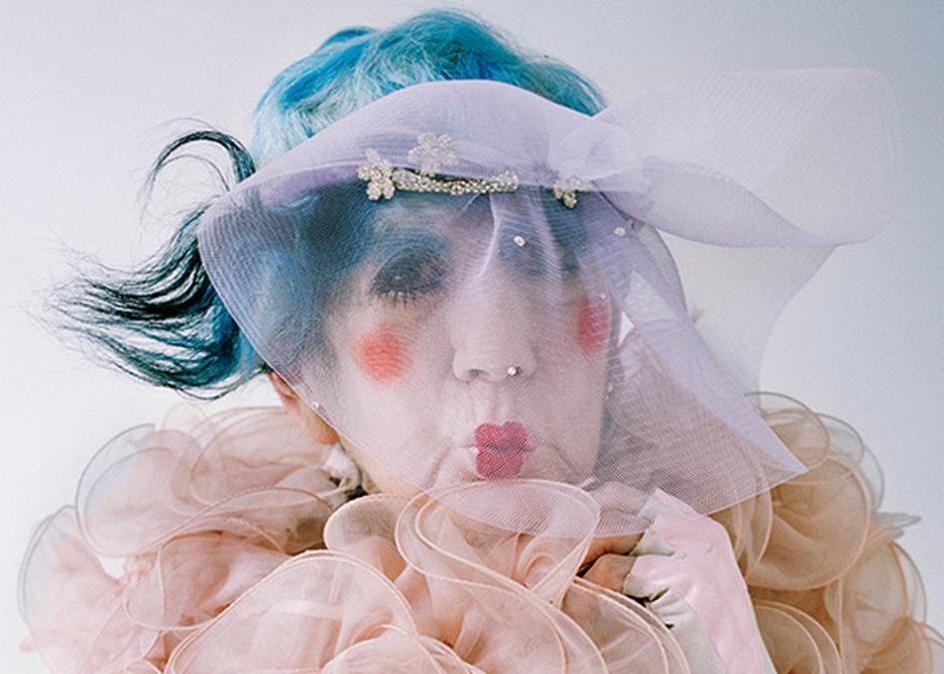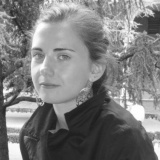
 Nicole Paronzini
Nicole Paronzini
Italian lifestyle and fashion: Anna Piaggi, celestial muse and unforgettable visionary
- WTI Magazine #99 Jan 20, 2018
-

 Nicole Paronzini
Nicole Paronzini
The world of fashion magazines is populated by a high number of great women editors and professionals, who made or are making its history. Thanks to their personality, artistic inclination, hard work, new ideas and understanding, these women left an unforgettable mark and an important legacy. This is the case of Anna Piaggi, who is remembered and celebrated in the inspiring documentary "Anna Piaggi: Una Visionaria Della Moda", by the Italian director, Alina Marazzi.
The film was presented in Milan, Piaggi’s hometown, in 2016, and was very well received. In US the documentary was shown at the Graduate Center, CUNY, in December 2017. Here, the movie was part of a bigger project, called Fabric of Cultures, a series of events and performances gravitating around the world of Italian culture and fashion, conceived and developed by, Professor Eugenia Paulicelli, director of MALS program at the Graduate Center, CUNY, with the help of others. Alina Marazzi was present at the screening followed by a Q & A. One of the things that came across was the audience’s fascination with the eccentric character of Anna Piaggi.
Alina Marazzi is known to the public for other famous works where her inquiring eye has often focused on the portrait of female figures who drew her attention, and this case was no different. Her idea was to deeply dig into a personality that was probably better known for her eccentric looks more than anything else, with the purpose to show how much more there is to understand and admire about Anna Piaggi. The documentary narrates the story of Piaggi’s personality and work, with the help of miscellaneous material such as archives, pictures, graphic designs, and interviews with designer friends and family who loved her and shared her life.
According to the director’s own words in an article on amica.it (Alina Marazzi: La mia Anna Piaggi, Oct.2016) she worked on a combination of different languages to mirror Piaggi’s way of communication. Alina Marazzi revealed that she never had an interest in fashion, but wanted to scratch the surface of a unique personality, who always escaped a traditional categorization and showed the strength to do what she had in mind. Anna Piaggi is shown here as a free and independent woman, able to make her own decisions and develop a very personal style. Her way to communicate and tell the story of fashion was reflected in Doppia Pagina, her signature column in Vogue Italia.
The impact that Anna Piaggi left in her work and in her personal life shines through in the interviews of her friends, collaborators and family, who remember her not only for her professionalism but also for her spirit, kindness and originality. Her unusual character was the result of rigor, eccentricity and the extreme need to communicate her ideas through a fashion text as well as through clothing.
Born in Milan, she lived between 1931 and 2012, becoming dear friend and muse of many designers and fashion personalities. These included Karl Lagerfeld, Manolo Blahnik, Stephen Jones and Jean Charles de Castelbajac, many of whom are featured in the film.
Her voice became one of the most important in the fashion word, especially in Italy, with her personal and peculiar style that matched her freedom of expression. She was able to anticipate many trends, and discover new designers, including Lagerfeld and Missoni.
The ability of Alina Marazzi to portrait not only the public image but also the private personality of such an outlandish character, with her symbolic weight and her legacy was not lost in the film. Anna Piaggi was a precursor of trends, a creator and an instigator and a link between fashion, style, art, avant-garde, past, present and future, as well as theater and literature. Along with her husband and artistic collaborator, the fashion photographer Alfa Castaldi, she wrote an important piece of Italian and international fashion and costume history.
Personally and professionally deeply influenced by the stylistic and cultural trends of London in the late ‘60s and ‘70s (freedom of expression and revolutionary ideas of rebellion), she brought these tendencies to her way of dressing and of viewing fashion as a whole, a way of communicating without any restrain.
In her opinion, clothes were like a written text, able to communicate directly to the others without any explanation. She was a walking manifesto of this idea: clothes and especially hats, were a way to link her inner self and the outside world. This is one of the reasons why her friends and family remember her with the most admiring words: as a muse, for Karl Lagerfeld, who could not help but try to immortalize her on paper, as a divine creature for Manolo Blahnik, who was her friend for forty-five years. She was also a wonderful and unique aunt for her young niece Galatea, who is also interviewed in the documentary, along with her mother.
The legacy of such an important personality is therefore complex and fundamental, as she was not only able to create something unique for the Italian and international fashion, but was also able to show the power of communicating through clothing. If each of us could only be remembered through an object, hers would be her hats: more than nine hundred are kept in the family warehouse, along with the rest of her clothes. She would wear a different hat for any occasion, and wore the most eccentric and magnificent ones possible. For her they were an extension of her personality and a way to feel more comfortable in the world and gave her the ability to stand out despite her short height.